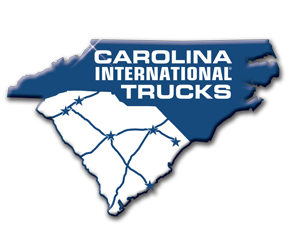CARGO SECUREMENT REGULATIONS
Feb. 5 2021
Heavy Truck Industry News
Anything and everything carried on a truck must be properly secured to prevent loss of control or falling cargo from injuring drivers, passengers, or pedestrians. While safe cargo securement principles (and of course regulations) apply to every single item carried for delivery, they also apply to anything else on the truck, including dunnage, tools, and equipment you need to get your job done. Shovels, blocks, webbing, chains, spare tires, brooms, forklifts, pallet jacks, winches, ratchets, etc., all must be secured.
- Know the regulations—Cargo securement standards represent the minimum safety requirements for general cargo and some specific commodities. They are available at no charge from FMCSA in the U.S. and from Canadian Council of Motor Transport Administrators in Canada.
- Invest in the illustrated cargo securement handbook, which includes both U.S. and Canadian regulations for reference. Click on CVSA’s store at www.cvsa.org and order a copy of Practical Cargo Securement: Guidelines for Drivers, Carriers & Shippers, 406 pages, USD$30
- Download the FMCSA Driver’s Handbook on Cargo Securement and provide a copy to your drivers. Integrate the handbook sections that apply to your type of operation in your Driver’s policy and procedures manual.
- Properly secure all equipment as well as your load—one of the most frequently cited violations is for improper securement of dunnage or equipment, such as tarps, blocks, chains or other tie downs, spare tires, brooms, forklifts, pallet jacks, winches, ratchets, etc.
- Inspect tie downs for wear and damage. CVSA’s North American Standard Out-of-Service Criteria includes the tie down defect tables for chain, wire rope, cordage, synthetic webbing, steel strapping, fittings or attachments and anchor points. If worn out, tie downs should be discarded.
- Brace and block cargo properly within sided or van trailers. Loads that shift can cause not only crashes but damage to your equipment. And they indicate violations that will affect your company’s safety rating.
- Use best practices or due diligence. There may be best practices, established by consensus by those who haul what you’re hauling, that are worth following. If your shipment is more unique, do your research, as the rules are established for a reason. Ensure your load is contained, immobilized or secured so that it cannot: (a) leak, spill, blow off, fall from, fall through or otherwise be dislodged from the vehicle, or (b) shift upon or within the vehicle to such an extent that the vehicle’s stability or maneuverability is affected. If needed, hire a professional specializing in vehicle loading.

